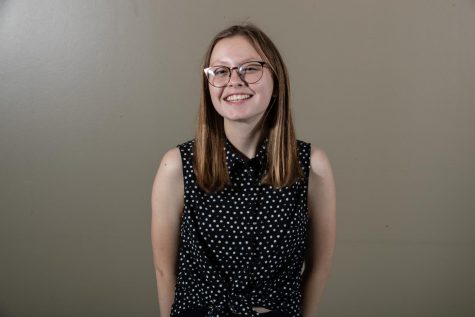Lotenschtein: Dispatches from Tel Aviv: Dancing with Batsheva, not on a battlefield
A DI reporter watches a Batsheva dance performance, a piece that highlights Israelis’ experiences of serving in the Yom Kippur War.
July 7, 2019
With a loud clap from backstage, the audience fell silent as I braced myself in my seat, anticipating another excessive blow to my sensitive ears.
A warm light glowed from the barren stage against the dark auditorium with another clap, drawing an invisible curtain between performers and spectators. One by one, dancers leapt from every corner of the stage, with periodic claps detonating alongside their movement. Batsheva, the world-renowned and most sought after dance company in Israel, performed one of its most well known pieces that Friday night, Sadeh21.
I wanted a plot, I wanted a story, I wanted a physical protagonist and antagonist; but trauma is a thing without any physical means to mold itself into.
With the dancers’ graceful, yet off-putting movements, their simplistic clothing, and straight faces, I found contemporary dance — at least for this performance — to resonate tones of somberness, memories, and trauma. Choreographed by Ohad Naharin, Sadeh21 exhibits his experience of serving in the Israeli Defense Forces. Surrounded by countries who do not see it as a true state, Israel requires that its youth aged 18 to 21 to serve in the army. Naharin was serving when the Yom Kippur War broke out, but the death toll didn’t stop when the cease fire was announced; it continued to rise through suicide.
Symptoms of severe depression and PTSD are splattered through the choreography. A dancer stands alone, smiling at the frozen audience, yelling incomprehensible words while the panic in his voice ebbs and flows, his smile unwavering, his eyes wide in terror. The stage goes dark.
RELATED: Lotenschtein: Dispatches from Tel Aviv: Balancing business and Shabbat on the international market
I shifted in my seat, hoping that, in easing my physical discomfort, it would influence my mind to mitigate the affliction Sadeh21 was causing me. I wanted a plot, I wanted a story, I wanted a physical protagonist and antagonist; but trauma is a thing without any physical means to mold itself into.
As the show continued to unfold through a series of haunting dances, I began to realize that watching this performance is the closest I will ever be to feeling such pain from serving my country in its darkest hour. The Yom Kippur War was particularly grim, as Israel had been caught by surprise by the countries surrounding its borders. As an American Jew, I can visit and live in Israel for extended periods of time without carrying that weight on my shoulders. I can connect my Jewish identity to Israel, and yet, I am still so far removed from the violence Israelis of all generations have endured.
But I believe this is why people pursue art; to tell a story, a feeling, a belief, an experience, through material or (not so material) means because what we feel can never be truly embodied through anything other than art.
RELATED: Lotenschtein: Dispatches from Tel Aviv: Reviewing history and prospective peace in the West Bank
Sadeh21 ended with the dancers artfully throwing themselves from a walled platform on the stage, only to slowly climb up the wall and launch themselves with grace again and again. Such actions held a fatal tones, ones that clearly stated: Suffering doesn’t end once experiences are over. The stage rose in color as the final claps, which now rang out from the audience, echoed throughout the auditorium.
Rising from my seat, I joined my friends on our journey back to our temporary home, with a newfound understanding and appreciation for survivors, for dancers, choreographers, and of course, for the fallen of unyielding trauma; whom I believe this performance is dedicated to.















